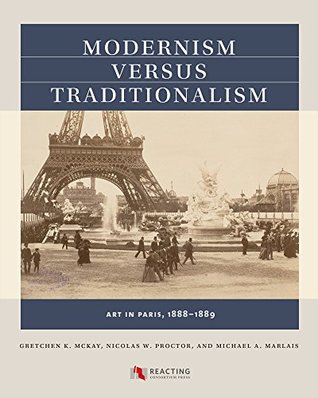Kindle Notes & Highlights
Aesthetics is at the center of the game.
The artists of the Academy remain devoted to standards, some of which were set in the late seventeenth century, but they all experiment within these constraints. The avant-garde wants change, but its individual members differ greatly on what that change should entail.
Art criticism is also very important in this period. Many critics were tied to specific artists and had preconceived notions of how art should look.
The critics reflect the main themes in art criticism that would have appeared in various publications in Paris at the time.
At the outset, none of them are unshakably focused on a single artist, but in the course of the game, they must select individual artists on which to bestow their favor, so artists must speak persuasively to win their affections.
The commodification of art is the final central issue.
Once they have received roles, they must begin explaining “their” art.
to justify their ideas about art.
They cannot just explain why they paint what they paint; they need to explain why what...
This highlight has been truncated due to consecutive passage length restrictions.
stage a series of art exhibitions to accompany the 1889 Expo...
This highlight has been truncated due to consecutive passage length restrictions.
position. Players must work hard to understand the intellectual basis for their aesthetic preferences.
However, every artist in the game shares one key victory objective: to sell art.
Critics want the artists that they support to sell as much art as possible.
While additional victory objectives are present for all characters in the game, none of them can be achieved without interacting and talking to one another in the course of the game.
It is impossible to win without engaging with the other characters in the context of the game.
The degree to which players are able to bring some order and clarity to their individual or group presentations on this day will determine their ability to win this part of the game. All
Critics may elevate artists through positive reviews.
These are represented by Critic Tickets, which should be presented along with speeches during game session 4. Critics should do this publicly and with flourish. The name of the recipient should be placed on the ticket. (Critic Tickets are attached to critics’ role sheets.) Recipients of Critic Tickets are assured one automatic sale in 1889. In addition, the good press surrounding these artists brings additional interest. This means that any show featuring an artist holding a Critic Ticket is ensured one additional sale. This is the “Halo Effect.”


